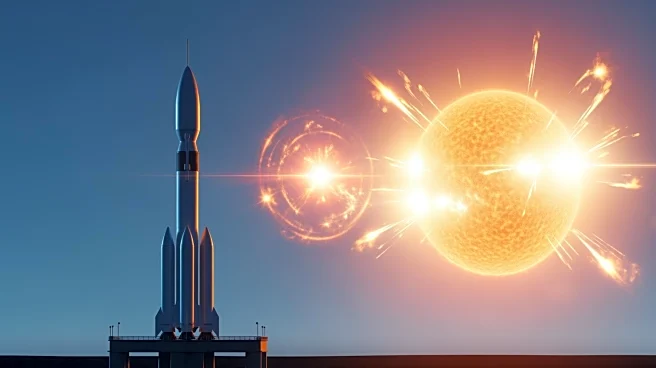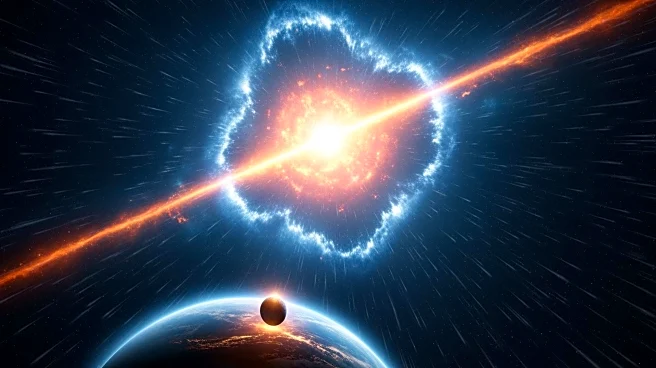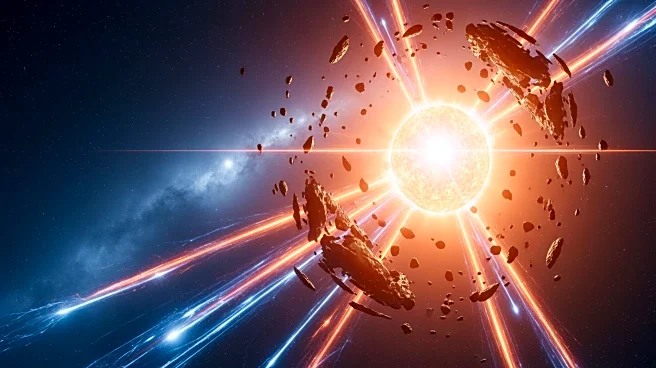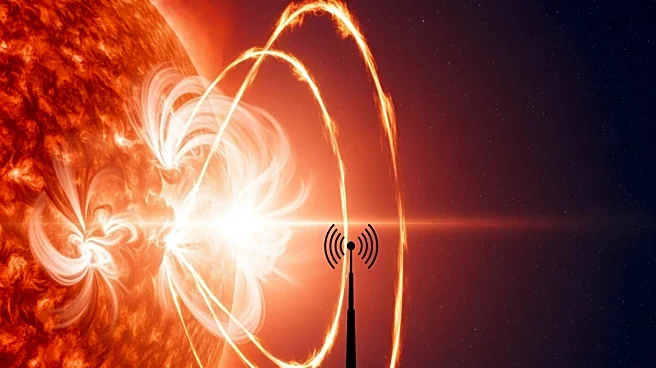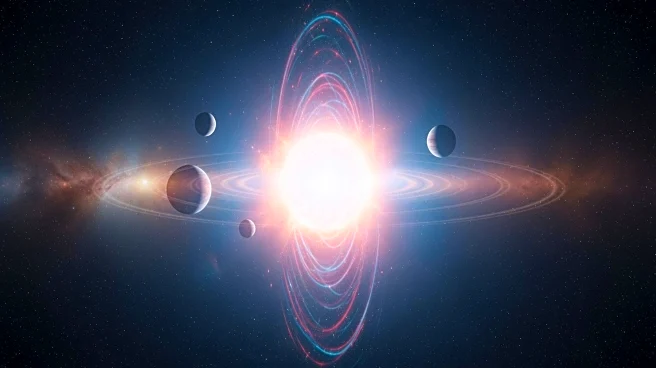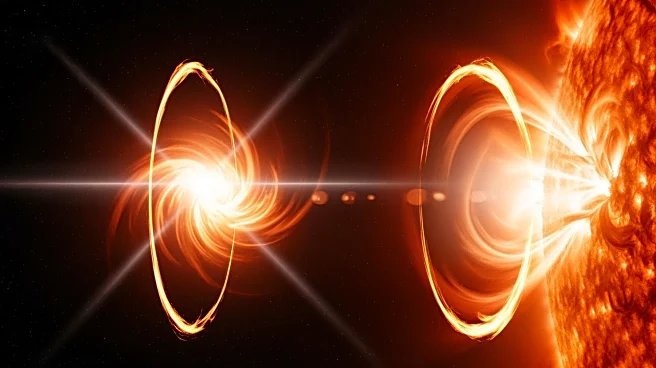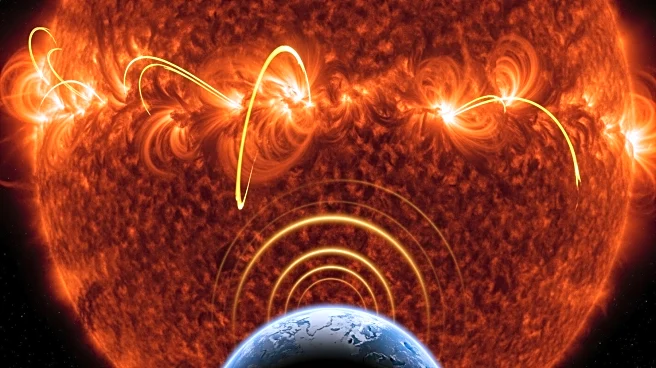What's Happening?
Astronomers have observed a massive explosion from a star outside our solar system, similar to solar storms but on a much larger scale. The event, likely caused by a coronal mass ejection (CME), was powerful enough to potentially strip the atmosphere
of a nearby planet. The star, StKM 1-1262, is a red dwarf located 130 light-years from Earth. The CME launched at a speed of 5.3 million miles per hour, a rare occurrence even for our sun. This discovery opens new avenues for studying extrasolar space weather and its impact on exoplanets.
Why It's Important?
Understanding stellar explosions like CMEs is crucial for assessing the habitability of exoplanets. Such events can have devastating effects on planetary atmospheres, potentially rendering them inhospitable for life. The detection of a CME from another star provides valuable insights into the violent activity of red dwarf stars, which are common hosts for exoplanets. This research helps astronomers evaluate the potential for life beyond our solar system and informs future studies on space weather phenomena.
What's Next?
Researchers aim to further investigate how red dwarf stars generate and release such immense energy, and the impact of repeated CMEs on nearby planets. The upcoming Square Kilometre Array telescope, expected to be completed in 2028, will enhance the ability to detect CMEs from other stars, providing more data for analysis. Continued research will focus on understanding the frequency and characteristics of these events, contributing to the broader field of exoplanetary science.




